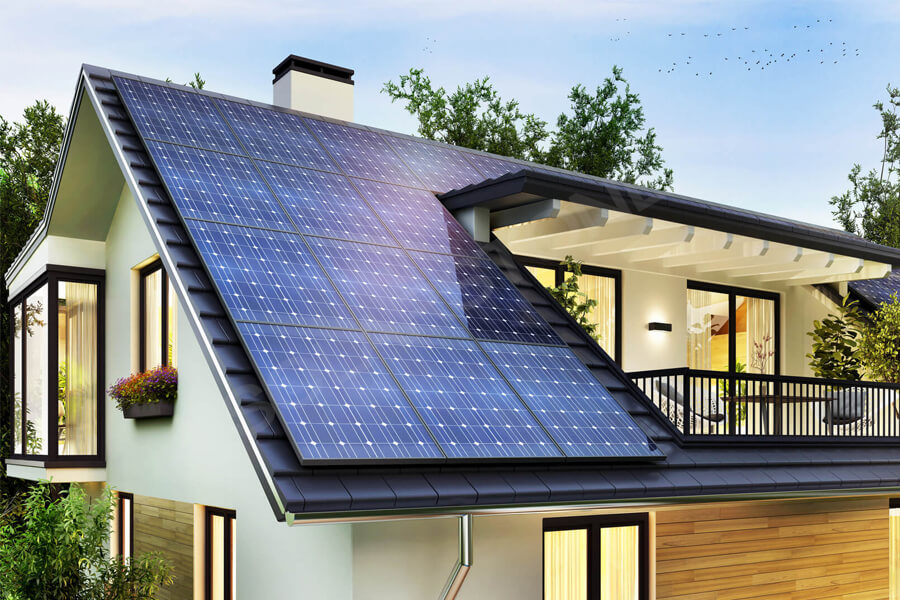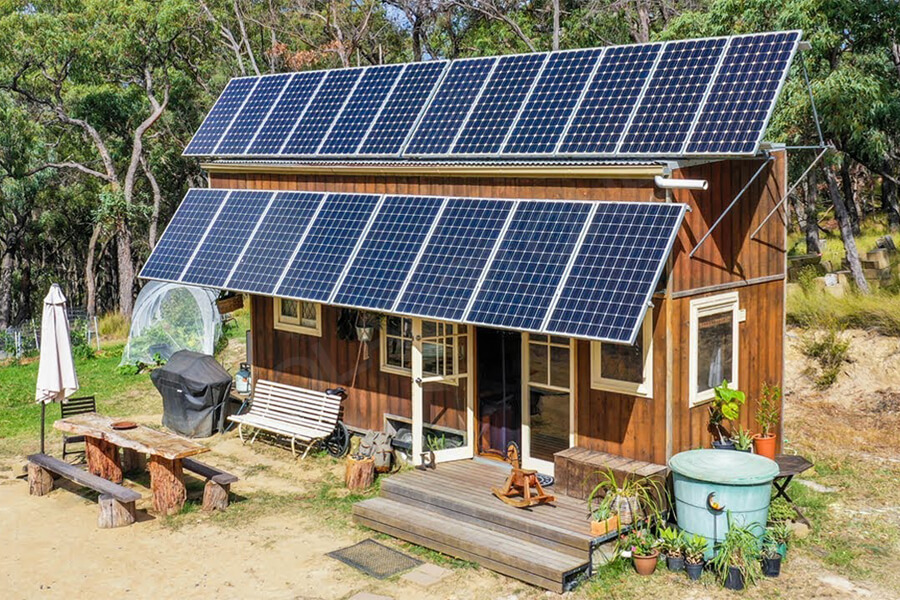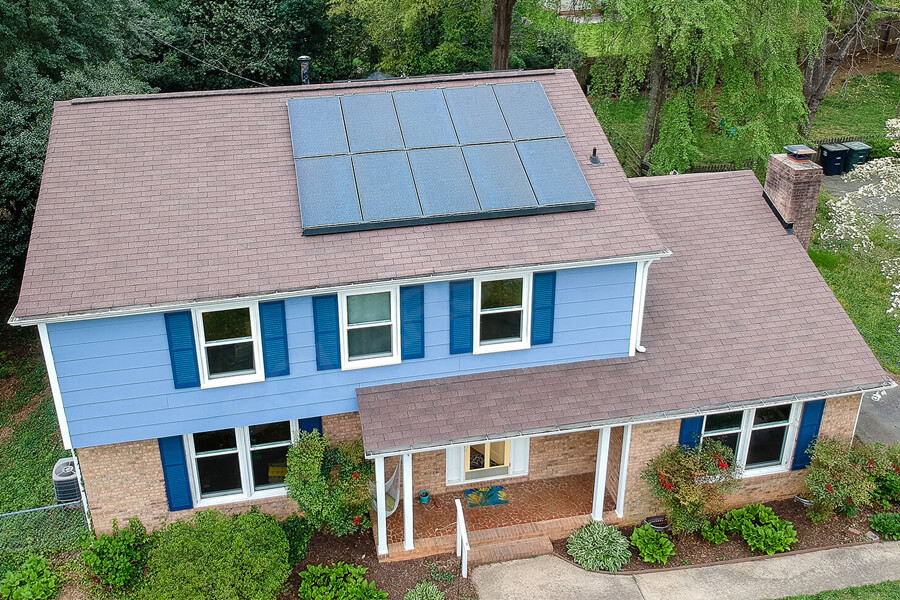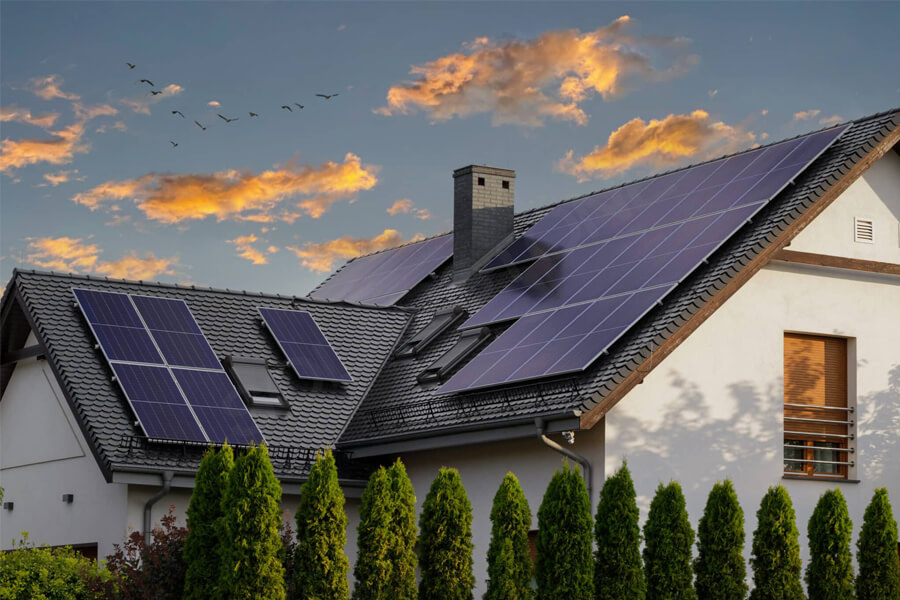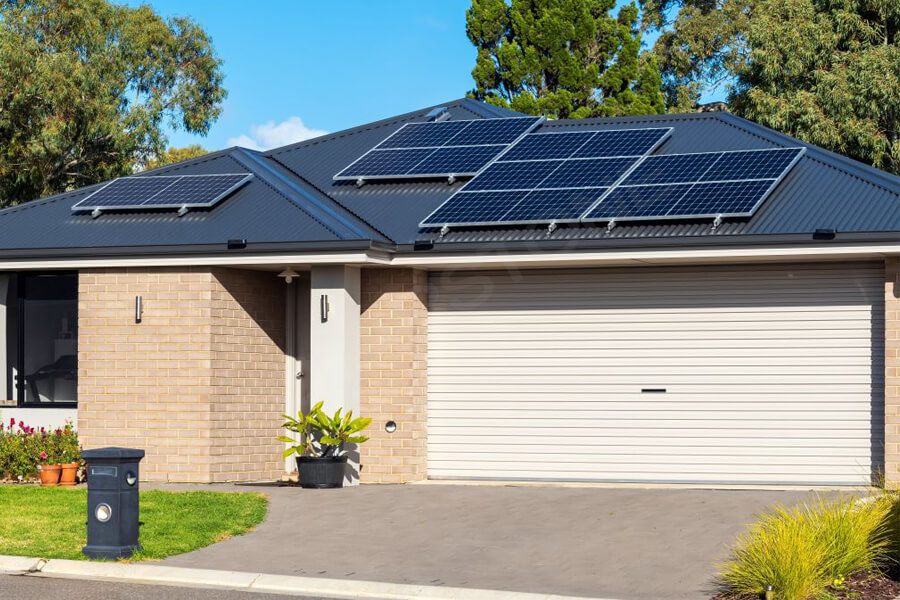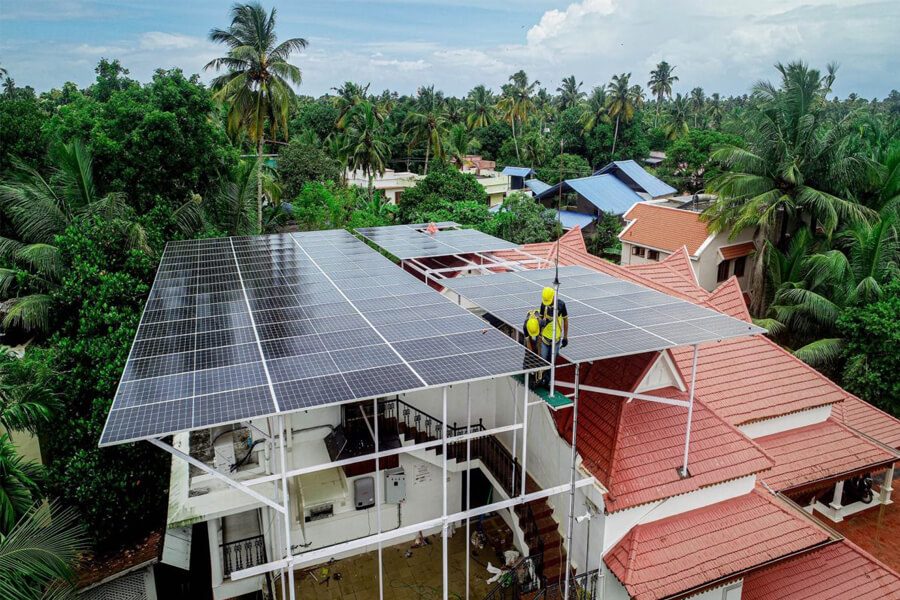The 3-5KW family roof solar grid connected power generation system is sufficient for military and civilian life in remote areas without electricity, such as plateaus, islands, pastoral areas, border guard posts, etc., such as lighting, televisions, radio recorders, etc.
The daily sunshine duration is calculated as 5 hours, and the average household electricity consumption is 5 degrees per day. Based on the sunshine duration of 5 hours, it requires 1 kw of power generation equipment, approximately 30 square meters.
Solar photovoltaic power generation requires comprehensive consideration of various factors. Only after obtaining accurate information can the installation method, minimum power, specifications (the daily effective power generation of solar panels must be greater than the load’s power consumption), and battery capacity, performance, and control methods be determined.
Make the product achieve the best cost performance ratio. If the estimation of relevant factors is incorrect, it will directly affect the performance and cost of independent photovoltaic power generation systems.
(1) The geographical location of the site.
Including: location, latitude, longitude, altitude, etc.
(2) Meteorological conditions at the installation site.
Including: monthly total solar radiation, direct radiation (or percentage of sunlight), annual average temperature, the longest continuous rainy days, maximum wind speed, and special meteorological conditions such as hail and snowfall.
(3) Maximum load.
Including: daily working hours and average power consumption of the load, as well as the time required for continuous rainy days.
(4) Load power consumption characteristics
Due to the fact that the current output from the solar cell array is DC, if the load is AC, it needs to be converted by an inverter to work properly. This increases the energy loss of the solar energy ultimately supplying the load, resulting in an increase in the required solar cells, leading to an increase in the cost of the solar power supply system.
(5) Requirements of AC load on power supply
In addition to requiring larger solar panels for AC loads, the requirements for inverters vary depending on the load. Generally speaking, loads with purely resistive properties, such as electric heating wires, have low requirements for inverters, and ordinary modified wave inverters can be used.
Television and electric motors require relatively high power requirements, requiring high inverter power and output characteristics. A high-power sine wave inverter is required to ensure that the load can work normally without interference. The cost varies depending on the load requirements.


